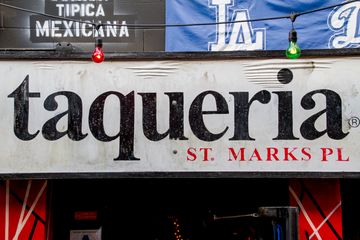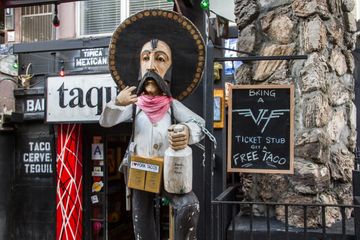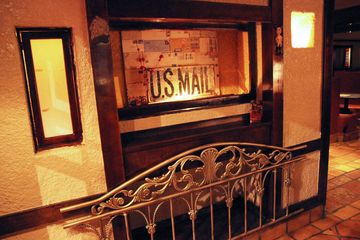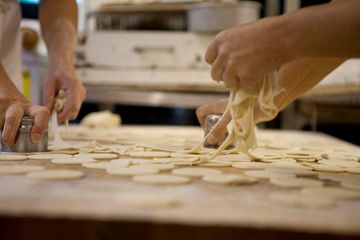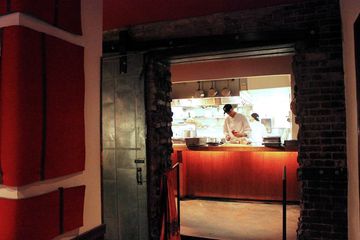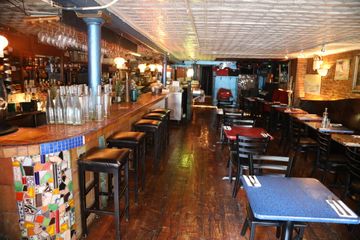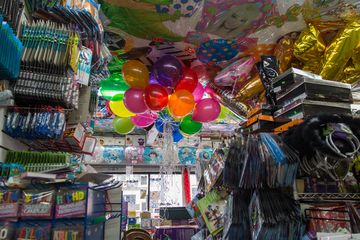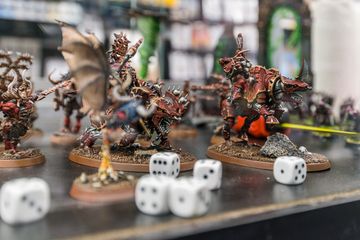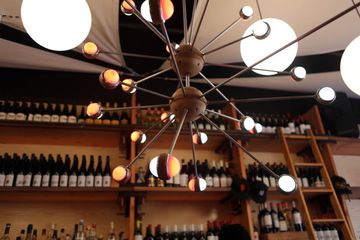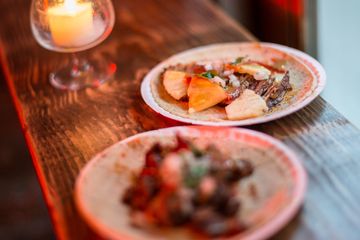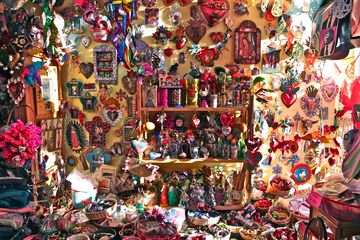After making frequent trips to Mexico and being unable to stay there as she wished, Dina Leor decided to do the next best thing: She brought Mexico to New York. Her success is evident upon walking into the store: Everything is covered in paper flowers and bright colors, enough to lift the spirits of any New Yorker wandering in on a gray day. A Lilliputian party of skeletal characters dance on a shelf for Día de los Muertos and little metal charms called “Milagros” or “miracles” cover many of the pieces. Dina carries everything from simple keychains and children’s toys to elaborate folk art, but each piece has a special meaning, often explained by little handwritten cards on the shelves. Dina is an artist herself: she used to make colorful boxes. When she opened La Sirena in 1999, she was essentially creating a bigger box: A box housing art and culture. She calls it her “evolving assemblage, ” a “living altar. ”La Sirena attracts all sorts of people. While I was visiting, there was a Swiss family browsing, straight from the airport. Since Dina’s was the first store they had found, they gave her a little box of Swiss chocolates. Many of Dina’s customers, however, are regulars, and Mexicans themselves. While spending time with Dina, she told me how a Mexican man had walked in and started weeping, because the store reminded him of his grandmother and he had not been able to go home to visit her. The store is “an umbrella of the republic, ” Dina says, and many regions of Mexico are represented. Dina went on to tell me another story, while explaining that she carries items from $2 to $500. One day she had a Mexican mother come in and gush over the merchandise. The woman wanted to get something for her four children, but only had a twenty-dollar bill. Dina helped her find four hand-made items and felt very proud when the cash register read “$19. 60. ” Some of the pricier pieces in the store come from the expatriate New Yorker Sue Kreitzman, a cookbook writer-turned-artist, whose work is celebrated in England, where she now resides. She uses echoes of Mexican folk art in her work. La Sirena provides her with many materials and is proud to feature her art. The history and familial meaning behind all the art is fascinating: Dina explained to me that in Mexico, life and art are not clearly separated. Artistic items are often family efforts, and children will frequently come home from school in the afternoon and help paint or sculpt or craft. The art is “handmade by beautiful people: ” when she travels around Mexico, people welcome her into their home and give her tortillas to represent reciprocal warmth. One of the most beautiful sights that she has seen on her travels was a woman breast-feeding while making clay pieces at the home of Josefina Aguilar, now well-known in the folk art community. “It’s part of the circle of life, ” Dina says: making art among nature, raising children, and teaching them the same artistic passions. Dina herself is part of this circle of life: As the adopted daughter of Mexico, she is continuing its artistic traditions and teaching them, in turn, to New Yorkers.
